The information in this post was taken from an article that was originally written by Eastern Sierra Land Trust members Tom and Jo Heindel for Eastern Sierra Audubon‘s Sierra Wave Newsletter. To read the original article, Click Here >>
Hummingbirds are found throughout the Western Hemisphere – and regardless of culture, country, or language, people everywhere are fascinated by these amazing birds.
Are you curious about local hummingbirds? Want to learn more about the different species that can be seen inthe Eastern Sierra, and what you can do to attract them to your yard? Eastern Sierra Land Trust members and birding experts, Tom and Jo Heindel, are here to answer your questions.
When should I put up and take down my hummingbird feeders?
This question reflects the concern that feeders might entice hummers to remain too long in fall, which might cause them irreparable harm. In Inyo County that does not appear to be the case. Hummingbirds are found year-round near Ridgecrest, 100 miles to the south of Bishop. If a hummer decided to leave Bishop it would arrive about three hours later where it would find feeders, shelter, and sparring companions.
So our answer is, “As soon as you move in and when you move away!”
If you have not had feeders out this winter, this is a good time to clean them with bleach, rinse repeatedly, and fill with fresh syrup since the migrants are already heading our way.
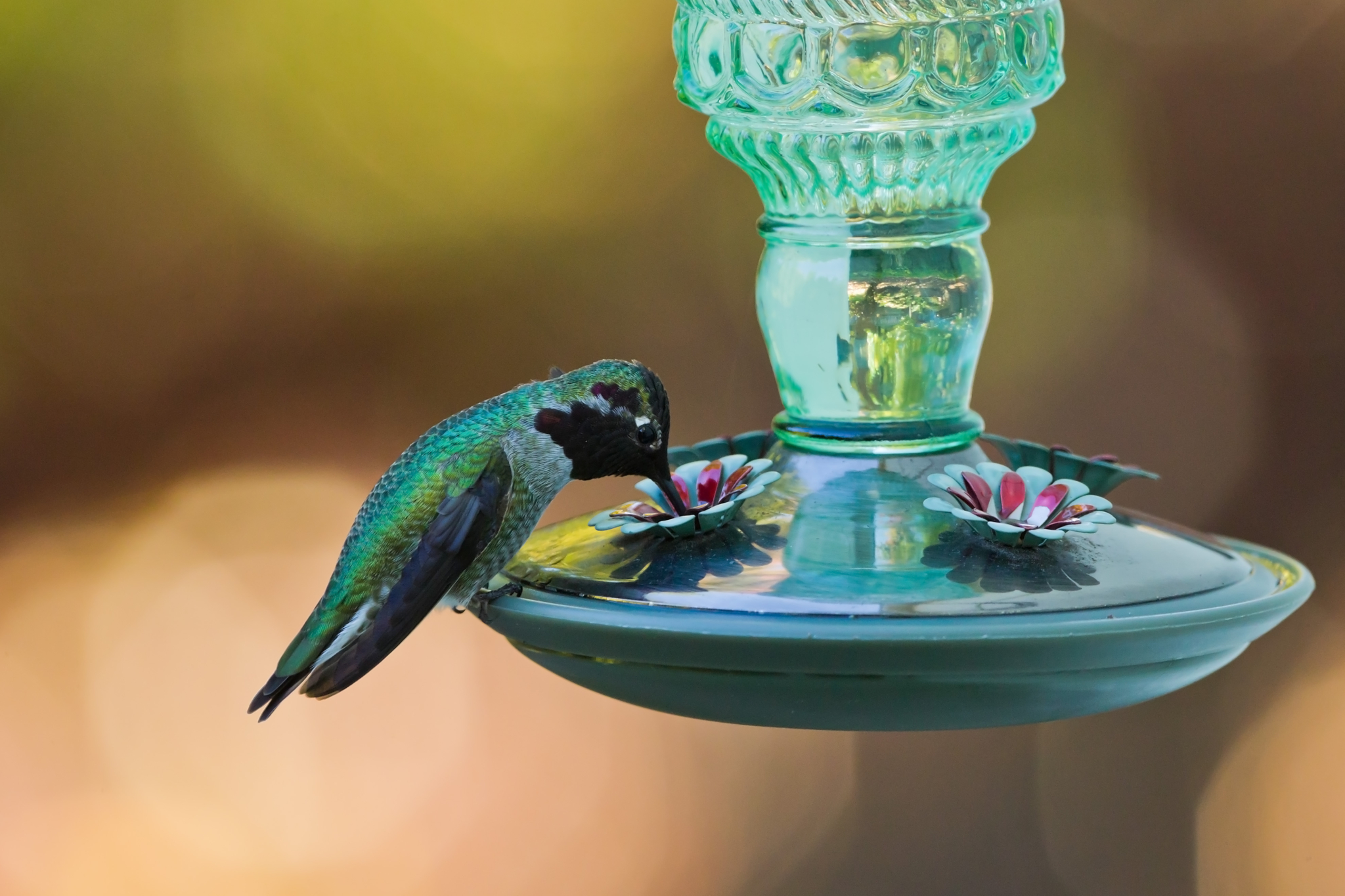
Anna’s Hummingbird, © Anatoliy Lukich
How do I make my feeder a popular hummingbird hangout?
If you put up just one feeder, one male usually usurps it as belonging only to him – so you should consider putting up more, widely spaced, and with cover nearby. Some people have 6-10 feeders up and during migration can have 10-20 or more hummers in their yard at one time, all feeding and fighting simultaneously.
During winter just a couple feeders are likely enough, and location is crucial to help reduce the chances of freezing. A mixture of 3:1 reduces the freezing temperature of the sugar solution to about 27ÀöF. Place feeders next to a house, especially where two walls join at a right angle, or under the eaves. Another configuration, if possible, is to place one where a flood lamp can be aimed from a few inches away. This prevents freezing no matter how cold it gets.
What plants can I add to my garden to attract hummingbirds?
California Native Plant Society – Bristlecone Chapter President Katie Quinlan keeps a vibrant native plant garden. From her experience, hummingbirds have beenmost attracted to the California fuschia, Desert willow, and Penstemons.
Katie will be offering many of these plants for sale at Eastern Sierra Land Trust’s annual GardenFest Celebration, taking place on Saturday, May 6 from 11am – 2pm in ESLT’s office backyard (250 N. Fowler St. in Bishop). For morenative plants,the California Native Plant Society’s annual Native Plant Salewill take place Tuesday, August 22 from 4 -6pm at the White Mountain Research Center.
Want to learn more about landscaping that will attract hummingbirds and other pollinators? Join Eastern Sierra Land Trust’s Eastside Pollinator Garden Project – click here for more information!
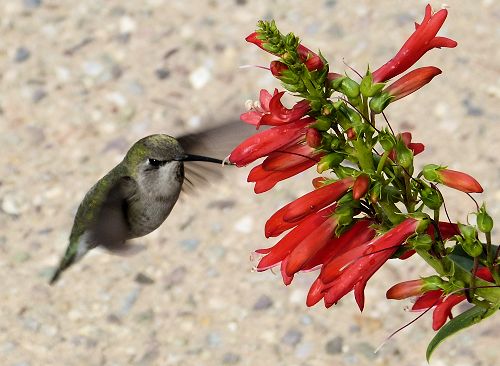
A hummingbird visits a firecracker penstemon (Penstemon eatonii), © GardenOracle.com.
Who’s been humming around town this winter?
In the northern Owens Valley, a few species of hummingbirds typically overwinter. These are usually Anna’s Hummingbirds, although we occasionally get Costa’s.
We have seen them perched on branches set up right next to the feeder with a floodlight and snow falling all around them. The snow disappeared in a few days but the hummer remained active throughout the rest of the winter.
-
Costa’s Hummingbird, © Steve Byland
-
Anna’s Humminbgird, © Tom Heindel
What hummingbirds should I be on the lookout for this year?
Inyo County has eight species of hummingbirds, all documented with photographs.
Two species are casual, the eastern Ruby-throated and the Mexican Broad-billed. A Ruby-throated was photographed at Furnace Creek Ranch (J.L. Dunn) and recently accepted by the California Bird Records Committee. The Broad-billed normally reaches southeastern Arizona but twice has made it to Inyo County where the immature males were well photographed in Lone Pine and Big Pine.
-
Broad-billed Hummingbird, © Tom Heindel
-
Ruby-throated Hummingbird, © Matt Heindel
Of the remaining six species, all occur annually in the Eastern Sierra – with Anna’s, Rufous, and Costa’s regular and widespread by mid to late March. Black-chinned, Calliope,and Broad-tailed arrive in April. All of these are breeders except the Rufous, which is a pure migrant here and breeds no closer than the extreme northwest corner of California.

Rufous Hummingbird, © Kelli Heindel
The Broad-tailed Hummingbird reaches the western extreme of its breeding range in the mountains of eastern California. While it has been known to breed in the Sierra Nevada, it is far more often reported in the mountains to the east, particularly the White, Inyo, and Panamint Ranges.
Anna’s and Black-chinned Hummingbirds are the species most often found in towns and riparian areas of the Owens Valley. Costa’s may also be found in these areas although they are usually associated with more desert-like habitats.
-
Black-chinned Hummingbird, © Tom Heindel
-
Broad-tailed Hummingbird, © Tom Heindel
Our smallest hummingbird, the Calliope, favors the mountains – this hummingbirdhas been found nesting as high as 10,000 feet, near the Baker Creek headwaters!
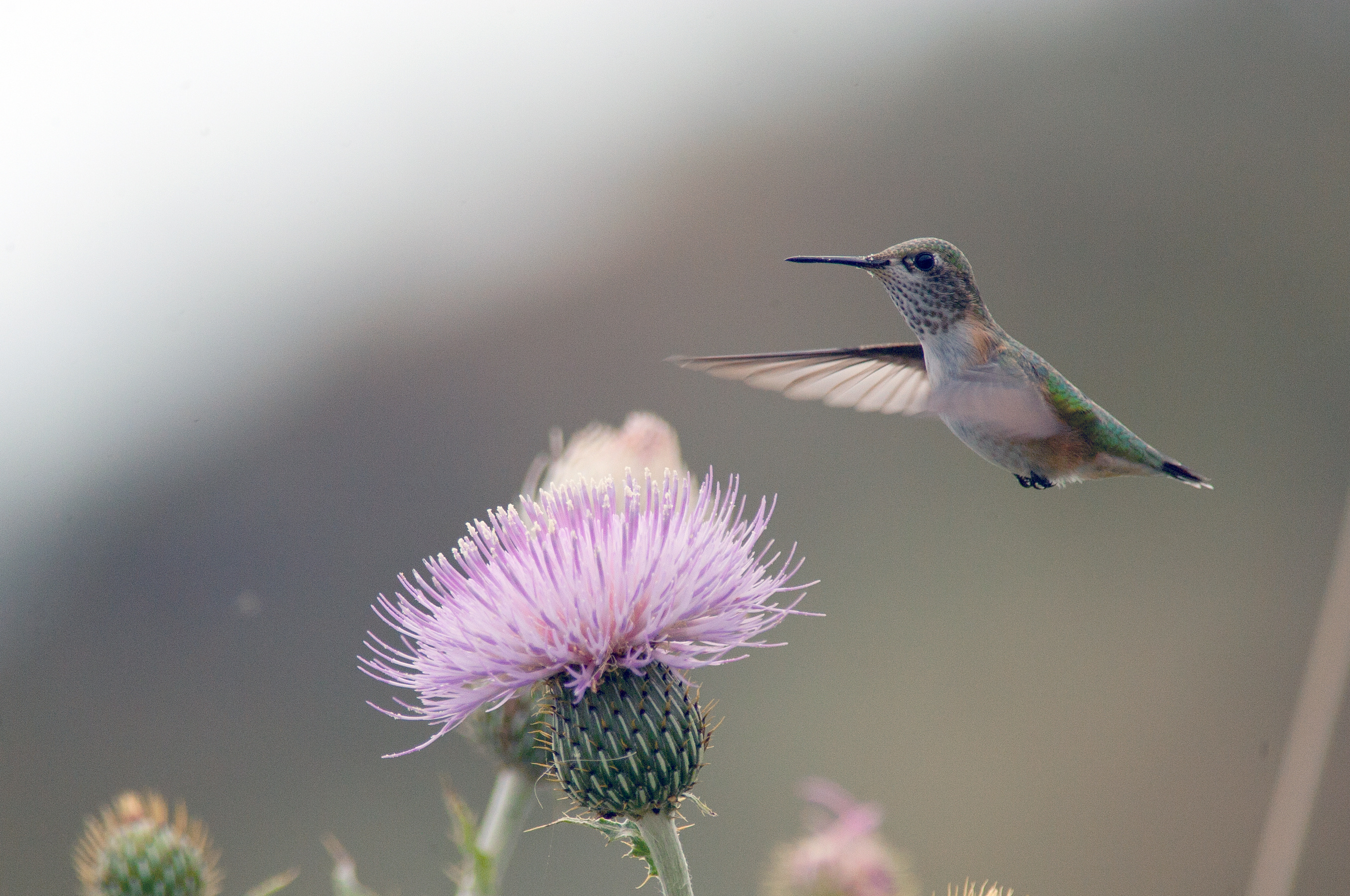
Calliope Hummingbird, © Tony Mills
Where can I learn more?
There are many good books on hummingbirds. Our favorite two are Hummingbirds of North America: The Photographic Guide, by S.N.G. Howell (2002 Academic Press) and Hummingbirds of North America, the Peterson Field Guide Series, by S.L. Williamson (2001 Houghton Mifflin, Co.).
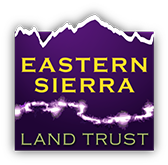



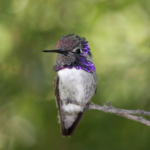
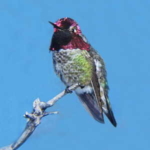
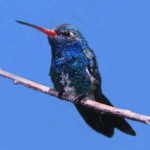
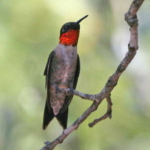
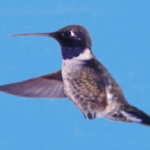
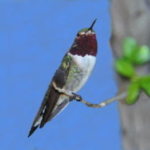



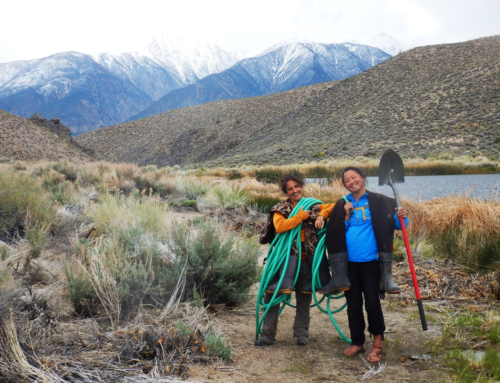
Thank you for your input. I am loving them in my yard. They brought so much joy during this trouble time. Great information
Thanks, Bill! We’re so glad you found the info helpful and that you are creating a great habitat for these fun little birds in your yard.